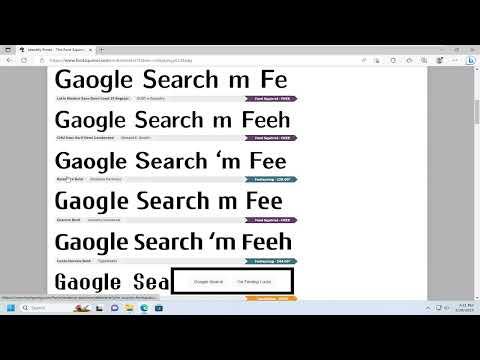Identifying a font from an image can be quite a challenging task, but with the right approach and tools, it’s entirely possible. I remember the first time I faced this issue; I was working on a project where I needed to match a specific font from an old poster to use it in a modern design. I found that the process involves several steps, each of which I will describe in detail to help you identify a font from an image successfully.
Firstly, the clarity of the image is crucial. The better the quality of the image, the easier it will be to identify the font. If the image is blurry or pixelated, it can be very difficult to distinguish the features of the letters. I recommend using a high-resolution image whenever possible. If the image is not clear, try to enhance it using photo editing software. Increasing the contrast and sharpness can help make the font more distinguishable.
Once you have a clear image, the next step is to isolate the text. This can be done using various photo editing tools like Adobe Photoshop or GIMP. Crop the image to focus solely on the text. If the text is part of a larger image, you may need to use tools such as the lasso tool or magic wand tool to select just the text area. Ensure that the cropped image includes a sufficient sample of the font, ideally including different letters and characters, as this will help in identifying the font more accurately.
After isolating the text, it’s time to use online tools that are specifically designed for font identification. One popular tool is WhatTheFont, which is available on MyFonts. To use WhatTheFont, simply upload your image to their website. The tool will analyze the text in the image and provide a list of fonts that match or closely resemble the one in your image. If the tool doesn’t recognize the font immediately, you may need to manually adjust the selection area to ensure it captures only the text.
Another useful tool is Font Squirrel’s Matcherator. Similar to WhatTheFont, Matcherator allows you to upload an image and then processes it to find matching fonts. Matcherator also provides options to manually adjust the text area and refine the search if the initial results are not satisfactory. Both tools are valuable resources, and sometimes using more than one tool can yield better results.
If online tools don’t provide a satisfactory match, another approach is to use font identification forums. Websites like Typophile and Reddit’s r/identifythisfont are great places to seek help from the community. Upload your image to these forums, and members of the community can often provide insights or suggest fonts based on their expertise. Sometimes, a fresh pair of eyes or someone with a deep knowledge of fonts can make all the difference.
For those who prefer a more hands-on approach, another option is to use font recognition software. Tools like FontForge or Adobe Illustrator can be used to create a vector version of the text from your image. This process involves tracing the letters in the image and then comparing them to known fonts. While this method can be time-consuming and requires a certain level of skill, it’s a valuable technique for those who want to dive deeper into font identification.
Additionally, learning to recognize different font characteristics can be extremely helpful. Fonts are categorized into various types such as serif, sans-serif, script, and display. By understanding these categories and their typical features, you can narrow down your search. For instance, if the font in your image is a serif font, it will have small lines or decorations at the end of its strokes, whereas a sans-serif font will lack these features. Knowing these details can guide you towards the right category of fonts, making the identification process quicker.
Moreover, analyzing specific letter shapes and characteristics can further refine your search. For example, the shape of the letter “a” can vary significantly between fonts. Some fonts have a single-story “a” (like in Arial), while others have a double-story “a” (like in Times New Roman). Paying attention to such details can help narrow down the options.
In my experience, identifying a font from an image often involves a combination of tools and techniques. While online tools and forums are incredibly useful, sometimes a bit of manual inspection and knowledge about font characteristics can make the difference. Additionally, staying persistent and experimenting with different methods will increase your chances of success.
In conclusion, identifying a font from an image requires a methodical approach. Start with a clear and high-resolution image, isolate the text, and use online tools or forums to assist in the identification. If necessary, leverage font recognition software and develop a keen eye for font characteristics to aid in the process. With patience and practice, you’ll become more adept at identifying fonts and can tackle even the most challenging font identification tasks with confidence.
